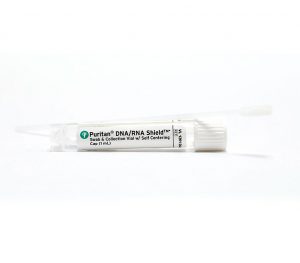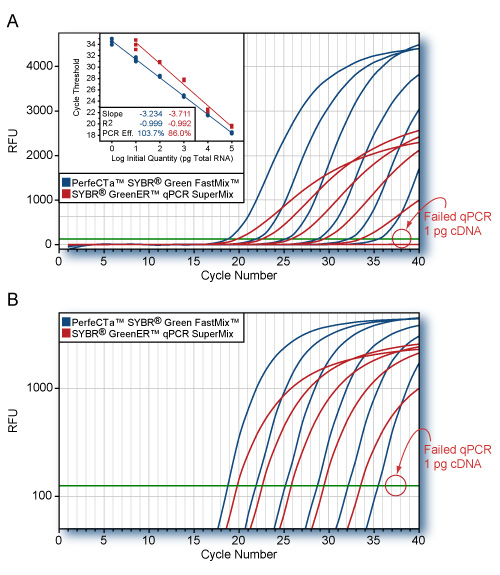Strep-Spin Protein Miniprep Kit
| Cat# | Name | Size |
|---|---|---|
| P2004 | Strep-Spin Protein Miniprep Kit | 10 Preps |
| P2005 | Strep-Spin Protein Miniprep Kit | 50 Preps |
Description
Highlights
- Fast: Purify Strep-tagged proteins from cell lysates in less than 7 minutes.
- Simple: Prepare pure protein for small-scale studies using a spin-column.
- Convenient: No special instrumentation needed other than a benchtop microcentrifuge
Description
The Strep-Spin Protein Miniprep Kit™ provides a fast spin-column based purification technology for Strep-tagged proteins. Up to 450 µg of Strep-tagged protein can be purified in 7 minutes and eluted in Strep-Elution Buffer. The purified protein is ultra-pure and can be used directly for enzymatic assays, protein biochemical analyses, SDS-PAGE and other sensitive applications. The straightforward spin, wash, and elute protocol dramatically simplifies protein purification and allows the end user to get results in minutes, not hours.
Affinity Matrix
Strep-Tactin® XT Superflow® 50%
Binding Capacity
100 µl of Strep-Tactin® XT Superflow® 50% suspension can bind 15 nmol biotin (approx. 450 µg of a 30 kDa Twin-Strep-tag® protein).
Elution Method
Biotin excess
Elution Volume
Recommended 3 x 200 µl
Principle of Technology
The Strep-Spin Protein Miniprep Kit is based on a novel StrepTactin® XT Superflow® resin which binds to Twin Strep-tag® with very high affinity. This tag contains two Strep-tag® II peptides connected via a Glycine/Serine linker sequence. Hence this kit is optimized for the purification of Twin-Step®-tagged proteins; however it will also work efficiently for proteins with single Strep-tags.
Processing Time
7 minutes
Product Storage
Please store the Strep-Tactin® XT Superflow® 50% suspension, Strep-Wash Buffer, and Strep-Elution Bufer at 4°C. The other components can be stored at room temperature.
Protein Purity
Electrophoretically pure. Purified high-quality protein is suitable for enzyme kinetics, protein biochemical analyses, SDS-PAGE, and other applications.
Required Equipment
Microcentrifuge
Sample Type
Cell lysates or other complex protein mixtures containing Strep-tagged proteins.
Q1: Which Step-Tag amino acid sequences are recommended?
Strep-tag® II: WSHPQFEK Twin-Strep-Tag® (Strep-tag III): WSHPQFEKGGGSGGGSGGWSHPQFE
Q2: Can the kit be used to purify membrane proteins?
Membrane proteins can be purified after solubilization in a nonionic detergent. Concentrations of up to 2% of Triton® or TWEEN® can be present in the loaded sample.
Q3: Can the sample contain biotin?
No, this will prevent the protein from binding to the matrix. To remove biotin from the sample we recommend to add stoichiometric amounts of Avidin prior to using the kit. Avidin blocks the biotin but does not bind to the Strep-tag. Alternatively, dialysis could be conducted.
Q4: Which pH should be used with the kit?
The pH value of the loaded sample should be greater then 7.0.
Q5: Which chemicals/reagents are compatible with the kit?
The sample may contain up to: Reducing Agents ≤ 50 mM β-mercaptoethanol Non-Ionic Detergents ≤ 2% Nonidet® P-40 ≤ 2% Triton® X-100 ≤ 2% Tween®-20 Ionic Detergents ≤ 0.1% SDS (Sodium-N-dodecyl sulfate) Denaturing Reagents ≤ 8 M Urea Chemicals and other Reagents ≤ 50 mM EDTA ≤ 10% (v/v) Ethanol ≤ 25% (v/v) Glycerol ≤ 250 mM Imidazole ≤ 1 M MgCl2 ≤ 5 M NaCl
Q6: Is there a recommended lysis protocol?
For protein purification from E. coli lysates: 1. Harvest & pellet 10 ml of E. coli culture. 2. Resuspend in 1-2 ml of Lysis Buffer (e.g. 300 mM NaCl,1% NP-40 in PBS, 1 mg/ml Lysozyme, 1 x Protease Inhibitor, 15 U/ml Benzonase®). 3. Incubate for 30 minutes at room temperature. 4. Spin at ≥ 12,000 x g at 4°C for 5 minutes. 5. Use the supernatant for the Strep-Spin Protein Miniprep Kit™ protocol.
Q7: How do you improve protein quality/purity?
– Check your buffers for signs of contamination and check the pH of the buffers. – Increase centrifugation time and speed. Ensure that the Strep-Tactin® XT Superflow® drains completely after each spin (some older centrifuge models may require a longer centrifugation time). – If the problem persists, additional wash steps can be added to the purification protocol.
Q8: Can less then 200 µl of Strep-Spin Elution Buffer be used for the elution step?
Smaller elution volumes are possible and may yield more concentrated protein, but the elution efficiency may be compromised.
Q9: Is it necessary to equilibrate the resin?
It will work without the equilibration step, however, for optimal performance we recommend including it.
Q10: What might reduce protein yields?
– The starting material contains Biotin. Free biotin binds to the Strep-Tactin® XT matrix and thus reduces the binding capacity for the desired protein. To remove biotin from the sample we recommend to add stoichiometric amounts of Avidin prior to using the kit. Avidin blocks the biotin but does not bind to the Strep-tag. Alternatively, dialysis could be conducted. – The Strep-tag may be rendered inaccessible due to protein folding. The protein can be purified at denaturing conditions. – The recombinant protein can become insoluble as a result of overexpression. The protein can be purified at denaturing conditions. – Starting material is too dilute. If the starting material contains very low levels of Strep-tagged protein, then it may require more than 800 µl of sample volume to purify enough protein. Simply repeat steps 5 and 6 until the desired volume has been loaded onto the column. – Please ensure not to use higher detergents volumes as mentioned in the Sample Preparation table. Using higher detergent amounts can reduce binding affinity.
Q11: How do you purify insoluble proteins?
Optimize expression conditions. Overexpression of proteins may result in formation of insoluble inclusion bodies inside cells. If a large band of overexpressed protein is visible after SDS-PAGE electrophoresis of whole cells, but the band is absent after SDS-PAGE electrophoresis of cleared cell lysates, this indicates that the protein may not be soluble and the expressed protein may form inclusion bodies. – Use Denaturing conditions. Insoluble proteins will not be purified using the provided buffers. It is, however, possible to purify such proteins at denaturing conditions in the presence of ≤ 8 M urea or ≤ 6 M guanidine hydrochloride. The protein native structure and thus enzyme activity is lost under such conditions, but may be restored by refolding the protein after purification.
| Cat # | Name | Size |
|---|---|---|
| P2004-1-5 | Strep-Tactin XT Superflow 50% | 5 ml |
| P2004-2-65 | Strep Wash Buffer | 65 ml |
| P2004-3-30 | Strep-Elution Buffer | 30 ml |
| C1001-50 | Collection Tubes | 50 Pack |
| P2003-1 | Zymo-Spin P1 Columns | 50 Pack |
- Catalog#: P2004 /P2005
- Package Length (in Inches): 4.25 /7
- Package Width (in Inches): 3 /4.75
- Package Height (in Inches): 2.75 /4
- Package Weight (in Pounds): 0.220462 /0.8
- Size: 10 Preps /50 preps
- Unit Standard: Metric
- Volume Units: Milliliters










